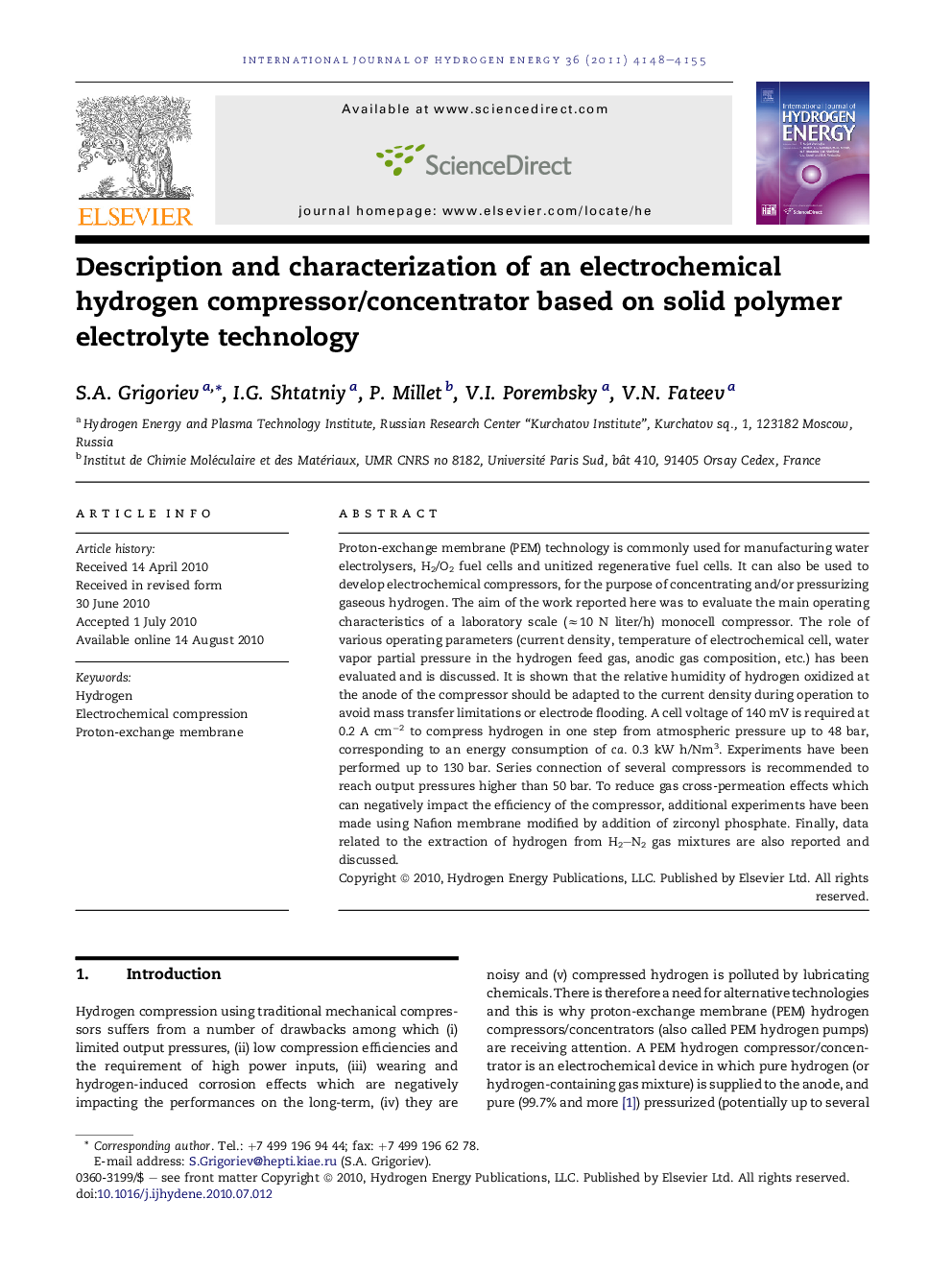| Article ID | Journal | Published Year | Pages | File Type |
|---|---|---|---|---|
| 7724373 | International Journal of Hydrogen Energy | 2011 | 8 Pages |
Abstract
Proton-exchange membrane (PEM) technology is commonly used for manufacturing water electrolysers, H2/O2 fuel cells and unitized regenerative fuel cells. It can also be used to develop electrochemical compressors, for the purpose of concentrating and/or pressurizing gaseous hydrogen. The aim of the work reported here was to evaluate the main operating characteristics of a laboratory scale (â10Â NÂ liter/h) monocell compressor. The role of various operating parameters (current density, temperature of electrochemical cell, water vapor partial pressure in the hydrogen feed gas, anodic gas composition, etc.) has been evaluated and is discussed. It is shown that the relative humidity of hydrogen oxidized at the anode of the compressor should be adapted to the current density during operation to avoid mass transfer limitations or electrode flooding. A cell voltage of 140Â mV is required at 0.2Â AÂ cmâ2 to compress hydrogen in one step from atmospheric pressure up to 48Â bar, corresponding to an energy consumption of ca. 0.3Â kWÂ h/Nm3. Experiments have been performed up to 130Â bar. Series connection of several compressors is recommended to reach output pressures higher than 50Â bar. To reduce gas cross-permeation effects which can negatively impact the efficiency of the compressor, additional experiments have been made using Nafion membrane modified by addition of zirconyl phosphate. Finally, data related to the extraction of hydrogen from H2-N2 gas mixtures are also reported and discussed.
Keywords
Related Topics
Physical Sciences and Engineering
Chemistry
Electrochemistry
Authors
S.A. Grigoriev, I.G. Shtatniy, P. Millet, V.I. Porembsky, V.N. Fateev,
